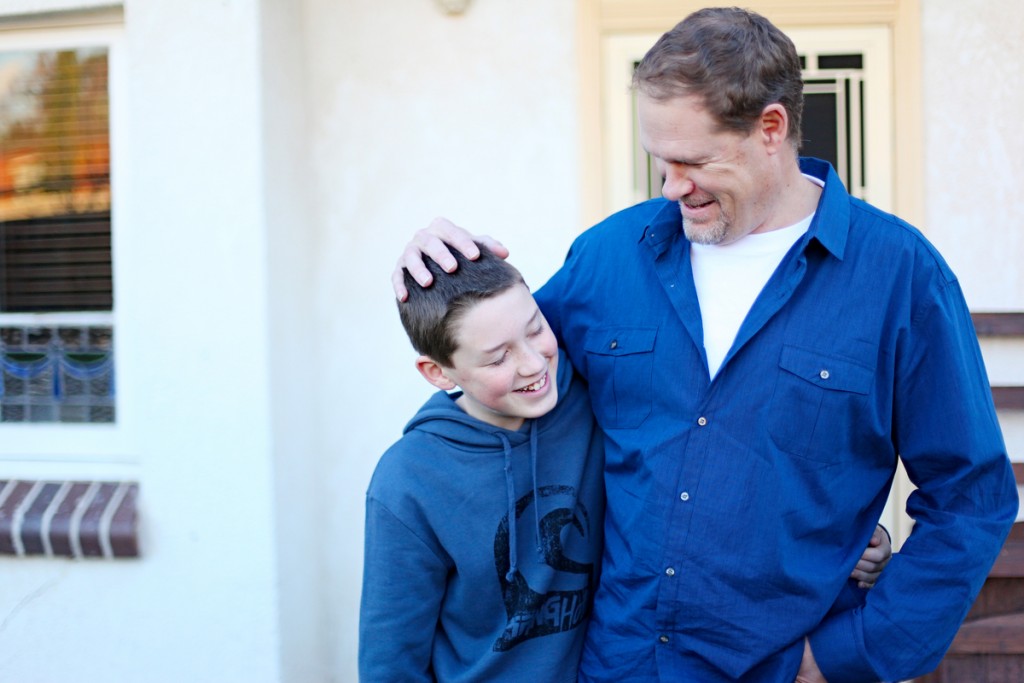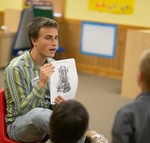Intergenerational Ministry Part 3: The Importance of Building Social Capital
In our first blog in the series , EM proposed 8 core suggestions on how a church might begin to rethink and redress this important but neglected area of church life, growth and health, and begin to re-strategise this ministry to the greater spiritual health and benefit of all believers, both young and old. The following is core suggestion 2 in the series: The Importance of Building Social Capital…
“Build ‘social capital’ into your child’s life, creating a network of caring believers who will pray for, mentor, and bless your children with their presence over the course of their lives” [1]
As mentioned previously, research clearly demonstrates that children, teens and young adults today have lost important ‘social capital’ in their lives. Each of these age groups are missing a handful of involved proactive adults who care and are willing to pour themselves into their lives without a self-serving agenda.
Life in the 21st Century is a far from easy place to grow up for children and teenagers. Salier rightly argues from research that today’s children are far more immersed and vulnerable to the surrounding culture than previous generations were; and with that immersion and influence comes all the attendant anxiety, confusion, concern and questions associated with such a challenge. [2]
To illustrate, Salier quotes recent research on fear and anxiety by John Hopkins University: [3]
30 years ago, the greatest fears of grade school children were:
- Animals 2.Being in a dark room 3. High places 4. Strangers 5. Loud noises
Today, kids are afraid of the following:
- Divorce 2. Nuclear war 3. Cancer 4. Pollution 5. Being mugged
Quite a significant difference in the weight and breadth of issues, notably, a radical shift from personal fears to a more parental, social and global anxiety. This statistic is a confronting reality that must naturally provoke some fairly profound and weighty questions in the hearts and minds of our children and youth about life, and about faith.
Salier notes:
“We know the answer to every question is God, Jesus and the Bible
but what are the questions for our young people?”[4]
And from – Think Orange:
“Growing up in this generation requires some pretty significant relationships. Children and students need the skills to navigate through some pretty difficult obstacles and the right voices to give wise direction” [5]
We’ve already learnt from the Francis and Richter study found that creating a safe space for kids, teens and young adults to share their significant questions, doubts and struggles in the faith is an important preventative to drop out. [6]
Both the comments of Salier and others are reflected in an assumption held by most of the research material, that this generation is vulnerable, and now more than ever, the generations need one another. It’s never been more important for our youth and children to have the loving input, support and influence of multiple trusted, mature Christian adults in their lives.
“The reality is when it comes to programming, many churches act as if truth is the most important part of discipleship. Teaching and content become the most important things that happen in every environment. We begin to think that discipleship is a class or curriculum…Children learn in the context of relationships, when their lives intersect with the lives of others. While the most significant relationships in a child’s life are the relationships at home, children have a better chance of understanding and interpreting life-changing truth when multiple influences in their lives are all saying the same thing” [7]
Sadly though, alongside surrendering discipleship to professional ministers, church programs have become so radically age segregated that there’s now little intergenerational contact or broad disciple-making interaction within the faith community.
Sticky Faith (among others) argues, in a number of different ways, that meaningful ‘intergenerational relationships’ are essential to children, teens and young adult’s feeling welcomed by older adults in the church, to feeling part of the church, as well as improving longevity of faith and enhancing overall spiritual vitality.
Sticky Faith notes:
“By far the number one way that churches made the teens in our survey feel welcomed and valued was when adults in the congregation showed an interest in them. More than any single program or event, adults’ making the effort to get to know the kids was far more likely to make the kids feel a significant part of their church” [8]
John Roberto of ‘Lifelong Faith’ believes intentionally bringing generations together within the church provides unique benefits and blessings through greater social interconnection and integration: [9]
Roberto argues greater intentional social integration:
* Reclaims God’s intent for faith to be shared in community and across generations
* Affirms each person’s value in the total community (regardless of age)
* Fosters a foundation of support of each other’s concerns, interests, and activities
* Provides “up close and personal” formation in faith as children, teens, young adults, middle-aged and older adults in sharing faith, teaching, learning, and praying for one another
* Teaches us to care for one another
* Provides role models for children and youth
* Teaches us to value older adults
* Allows us to pass on the traditions of family and faith
* Enhances people’s identification with their congregation and integration within the community
* Encourages greater faith in all generations
* Creates special relationships between adults and youth
* Fosters leadership regardless of age or stature
* Utilizes the strengths (the wisdom, experience and knowledge) of one generation to meet the needs of another generation
* Promotes understanding of shared values and respect for individuals in all stages and ages of life
* Utilizes the creative talents of younger and older generations to provide service to the church and community
* Overcomes the age-segregated nature of our society, taking a pro-active, counter-cultural stance in the face of the countless ways society separates and pigeon-holes into age-specific groups
David Fraze (Fuller Youth Institute) makes the added point that youth ministry in general has done a fairly good job with youth who come from “strong, intact and engaged” families, but the real question for the church is – “how to nurture students whose families are scattered, unsupportive and disengaged.” [10]
Fraze’s solution is:
“…to implement intergenerational strategies, that is, “practices designed to create opportunities for spiritual growth across generational lines.” These strategies call the community of faith to offer hope not only to youth, but also single parents, divorced persons and others who have been hurt by family relationships, “by providing a family in which healing and acceptance are found” [11]
In order to redress this loss of social capital, and regain the many benefits and blessings that intergenerational reconnection can provide; the church must begin to re-explore ways to intentionally rebuild social capital into its ministry activity and into congregational life. Parents likewise, must seek to intentionally build broad based intergenerational social capital within their relational circle, as an important extension to today’s isolated nuclear family life.
Research has suggested one basic starting point for both churches and families is rethinking the place and importance of mentor figures for teens and Millennials, and intentionally increasing the adult-child ratio for kids.
Mentor Figures for Older Teens and Millennials:
“While our children need to be with their peers they also need mentors that are at least five years older than them and are someone they adore, and they also need ‘grandmothers’ and ‘grandfathers’ that they can hang out with to keep them feeling connected. Sadly though, most churches have an ‘isolation ethos’ that keeps generations apart from each other” [12]
It’s not only children and who are feeling the ‘generation interaction’ gap, older teens and the ‘twentysomething’ group are also feeling more isolated from parents and other older adults in the realm of faith and spirituality. Many feel older adults of the next generation do not understand their doubts or concerns, and the majority of young people in this age bracket reported never having an adult friend other than their parents. [13]
As already noted (section B point 4), when survey participants were asked the question – ‘what might have been done better in youth group that might have helped their friends move on to attend church as adults’ – the Transitioning Children Survey found: [14]
* 38.0% indicated ‘more discipleship’
* 44.2% indicated ‘better emphasis on growing in faith’
* 48.2% indicated ‘a mentoring program’
* 54% indicated ‘more emphasis on mentoring by leaders’
This Millennial age group in particular, appears to relish, not only diversity of ideas but also much greater diversity of relationships. Because of their post teenage stage, there’s both a yearning to be mentored on the one hand, yet also the desire to have that carefully and thoughtfully balanced out by allowing them the freedom, independence and scope to be able to make it on their own. [15]
Research indicates the third strongest felt need Millennials have is for guidance or direction in their life that is trustworthy. This generation craves mentor figures, but mentoring where the guidance, encouragement and support offered is in the form of a navigator, not a street directory…
“…they [Millennials] are seeking direction from someone who knows them, their situation, and has even travelled that way themselves. They are looking for real life role models and mentors who not only know the way, but also go the way, and can show the way” [16]
Clark and Powell note, that with the advent of Facebook, Skype and other new technologies, even distance need not be a barrier for adult mentors and older aged friends to play a significant and ongoing role in building a ‘sticky web’ of stable and influential relationships with teens and young adults taking the form of an ‘extended’ family in their lives. [17]
5:1 Ratio For Kids and Young Teens:
In response to research on the needs of children and youth, Clark and Powell suggest what may be needed is a new 5:1 ratio of contact and engagement.
Instead of thinking one leader for every five kids and early teens, churches and parents need to start thinking:
“5 adults to every 1 kid, adults of all ages whom we recruit to invest in each child in little, medium or big ways, building a ‘sticky web of relationships’ for our children” [18]
Nieuwhof reiterates this gaping need for more adult contact for children in her article –“Why Your Kids Need Five Other Adults in Their Lives”:
“I dream of a culture in which every child has five adults, other than their parents, they can talk to about the important stuff. Like school. And girls. And parents. And the future. And God. And faith. And their problems…” [19]
The suggestion is that each child, each teen, each young adult has access to at least:
* Five people who know their hopes and dreams
* Five people who know their quirks and good points
* Five people they can talk to honestly about what’s really going on in their lives
* Five people who can offer wisdom when life gets confusing
* Five people who care about them and pray for them
Nieuwhof suggests it should be possible to secure at least five Christian, committed and reliable adults from amongst our small groups, family friends, coaches and extended family, with whom a child can build a trusting relationship, that might be willing to spend one-on-one time with that child periodically.
She concludes by extending this challenge and vision:
“My question is simple: who are your kids’ five? Who will they text and who will they call when they don’t know what to do?…If every child and teen ends up with five adults on their phone’s favorite list, we might indeed be raising a wider, more secure, more grounded, more Christ-centered, more joyful generation than we’ve seen in a long time….If you’re still not convinced, I have a simple question. Don’t you wish there had been five other adults in your life growing up that you had a great relationship with, trusted, and could talk to?” [20]
One family created a 5:1 ratio this way:
“Two years ago, Dave and I decided to follow their example by starting an intergenerational group of families to walk through life together. We invited three families to join: one that was in our life stage, one with a newborn, and one couple in their sixties who has nurtured us since we were engaged…even if you can’t develop a 5:1 from one cohesive group, you can create a cluster of relationships that form your own 5:1 constellation” [21]
NEXT POST: The next post in the series will be – ‘Creating Structures that Span Life Stages’.
[1] Dr. K. E. Powell & Dr. C. Clark: Sticky Faith.
[2] Dr B. Salier: ‘What does the Word teach us about Children’s and Youth Ministry’? Effective Ministry Forum, 2015.
[3] Ibid
[4] Ibid
[5] R. Joiner: Think Orange: Church and Families joining Together for More Effective Ministry
[6] L. Francis L & P. Richter: Gone for Good? Church–Leaving and Returning in the 21st Century.
[7] Think Orange.
[8] Sticky Faith.
[9] J. Roberto: ‘Becoming Intentionally Intergenerational: Models and Strategies.
[10] From H.C. Allen & C.L. Ross: Intergenerational Christian Formation.
[11] Ibid: p. 15.
[12] D. Goodwin: Lost in Transition – Or Not: ‘Addressing the Problem of Children Leaving the Church as they Make the Transition from Childhood to Youth’.
[13] Ibid.
[14] Ibid.
[15] D. Kinnaman refers to this dual desire as the ‘me-and-we’ contradiction in ‘You Lost Me: Why Young Christians are Leaving Church…and Rethinking Faith’.
[16] Mark McCrindle: ‘Understanding Generation Y.
[17] Sticky Faith.
[18] Ibid.
[19] C. Nieuwhof: ‘Why Your Kids Need Five Other Adults in Their Lives’..
[20] Nieuwhof.
[21] Sticky Faith.
Other blogs in the series:
* Intergenerational Ministry Part 1: ‘Why Intergenerational Ministry’
* Intergenerational Ministry: Part 2: ‘Carefully Manage Age Segregation’
* To download a full copy of E.M’s research on this topic go to the ‘Intergenerational Ministry’ page on this website.








